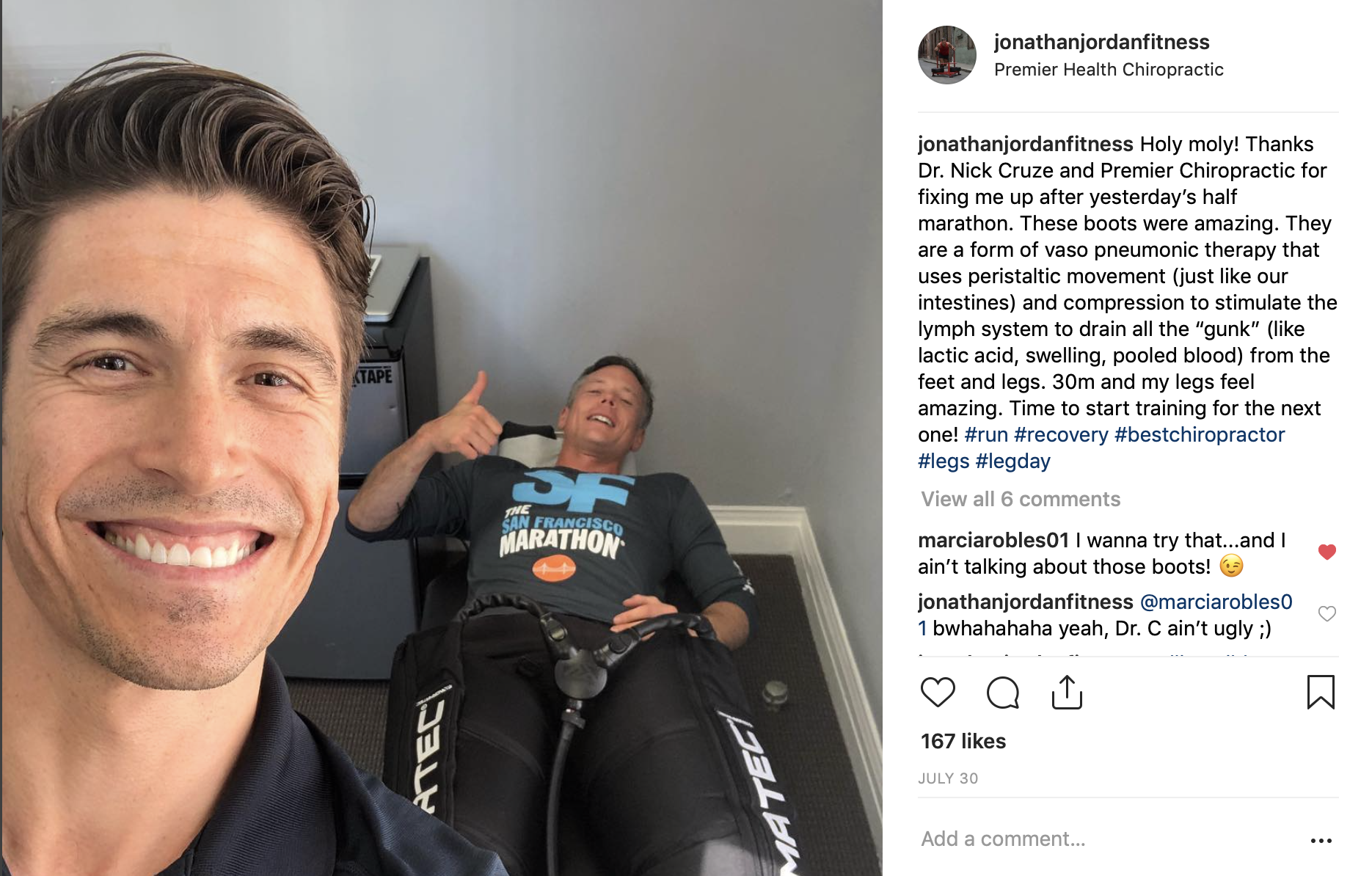E-Stim, Cupping, Compression and K-Tape for Pain Management
/I suffer from occasional muscle spasms in my back, hip and leg due to an old injury when a drunken friend thought it would be fun to jump on my back when I was walking down some stairs (Note: that’s never a good idea!). Years of mobility, strength and core training plus the care of some amazing chiropractors, physical therapists and CMTs have minimized my flare ups. I used to be benched for a week or longer at least once a year and now I have just the occasional short episode. As long as I’m careful and catch signs of trouble early I’m usually golden. But every once and a while I get a doozy of an attack and when I do, in addition to traditional chiropractic and massage, these four treatments help reduce my pain and get me back on my feet again.
Electric Stimulation
It may sound painful and torturous, but zapping the affected area with low levels of electricity, while controversial, in my experience immediately reduces pain and improves mobility. It doesn’t hurt, in fact it feels nice—like a massage. The electrodes feel like fingers rubbing your muscles. The theories behind how and why it works vary and clinical research is mixed when measuring against placebo. Some suggest it works because it blocks nerve pain pathways and triggers the release of the body’s natural painkillers (i.e. endorphins). In my experience, when a muscle is so hypertonic that it can’t release and is super inflamed, 10-15 minutes of e-stimulation calms it down so everything can settle. Check out this article and the video below for more info.
Cupping
From Michael Phelps to Ryan Seacrest to the girl squatting next to you in the gym, cupping (or "myofascial decompression") is becoming an increasingly popular modality to help with fascial dysfunction. Perfectly round telltale "bruises" are making their way onto backs, shoulders and hips everywhere and are raising eyebrows from those who don't understand what they are. I've personally experienced positive results from cupping as part of an integrated physical therapy pain management program. So I enlisted the awesome Dr. Sarah Jay from GSPORTS Physical Therapy to discuss and demonstrate how cupping can help improve fascial health and mobility.
Compression Boots
"Intermittent pneumatic compression" via inflatable boots like these helps improve venous circulation in the limbs and helps overused muscles recover. This form of vaso pneumonic therapy uses peristaltic movement (just like our intestines) and compression to stimulate the lymph system to drain all the “gunk” (like lactic acid, swelling, pooled blood) from the feet and legs. 30 minutes of treatment and my legs feel amazing and I experience fewer cramps, spasms and pain in my feet, quads and hamstrings.
Kinesiology Tape
In a nutshell, tape changes sensory input for a change in output. Tape stimulates the skin and mechanoreceptors which provide the brain information. With this new information the brain can improve our motor output for reduced pain and better movement. If you want to dig into the weeds including clinical research and studies that validate its effectiveness you can check out these slides from the basic and performance courses offered by RockTape. For a discussion on the notion of pain as an experience of the brain and research on this idea, check out this article from Scientific American. More from me on this here.



